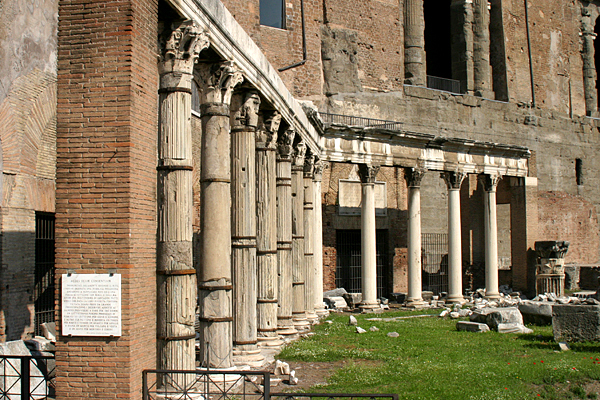

"...those urban gods, whose images stand around the forum, bedecked with gold, six male and a like number female." Varro, On Agriculture (I.1.4)
Occupying an awkward section of ground formed by the Clivus Capitolinus where it angles sharply to the right and ascends the Capitoline hill, the Porticus Deorum Consentium probably dates from the reign of Hadrian (AD 118-138). Its colonnaded portico is presumed to honor the twelve most revered gods in the Roman pantheon (Dei Consentes, six male and six female). It is the last shrine to the pagan gods and was restored by the prefect of Rome, an avowed pagan, in AD 367, four years after the death of Julian, when Christianity had been re-established as the official religion of the empire.
Ennius, in his Annals (LXII), lists the twelve gods by gender: Juno, Vesta, Minerva, Ceres, Diana, Venus, Mars, Mercury, Jupiter, Neptune, Vulcan, and Apollo. Livy (XXII.10) pairs them as Jupiter and Juno, Neptune and Minerva, Mars and Venus, Apollo and Diana, Vulcan and Vesta, Mercury and Ceres.